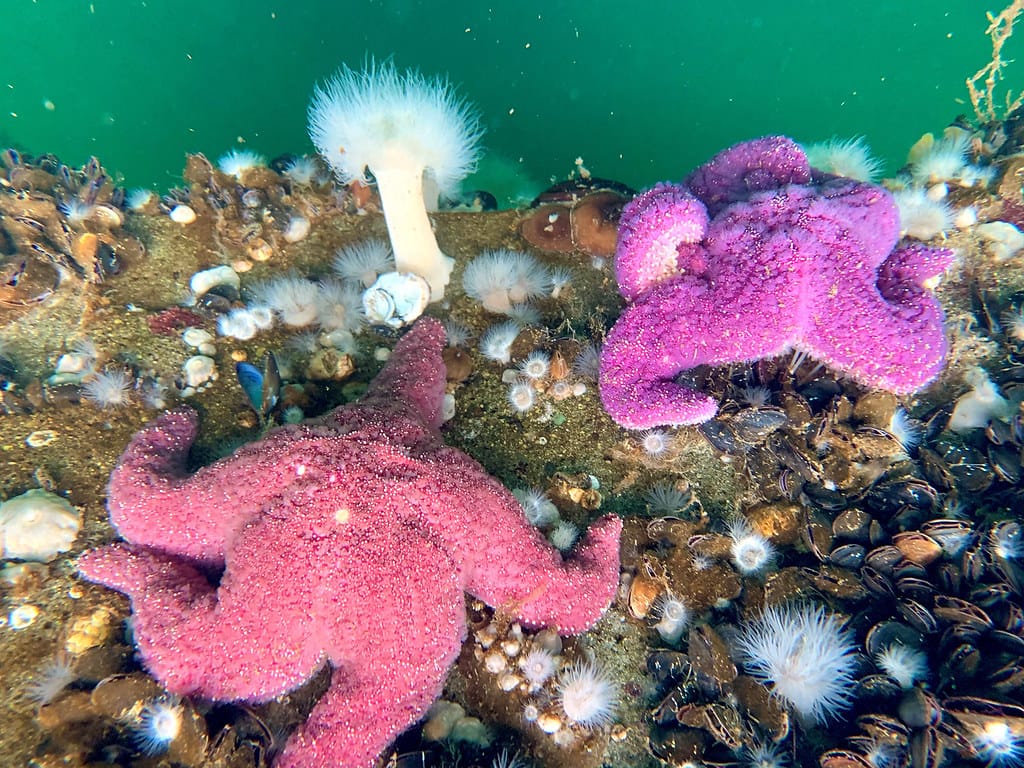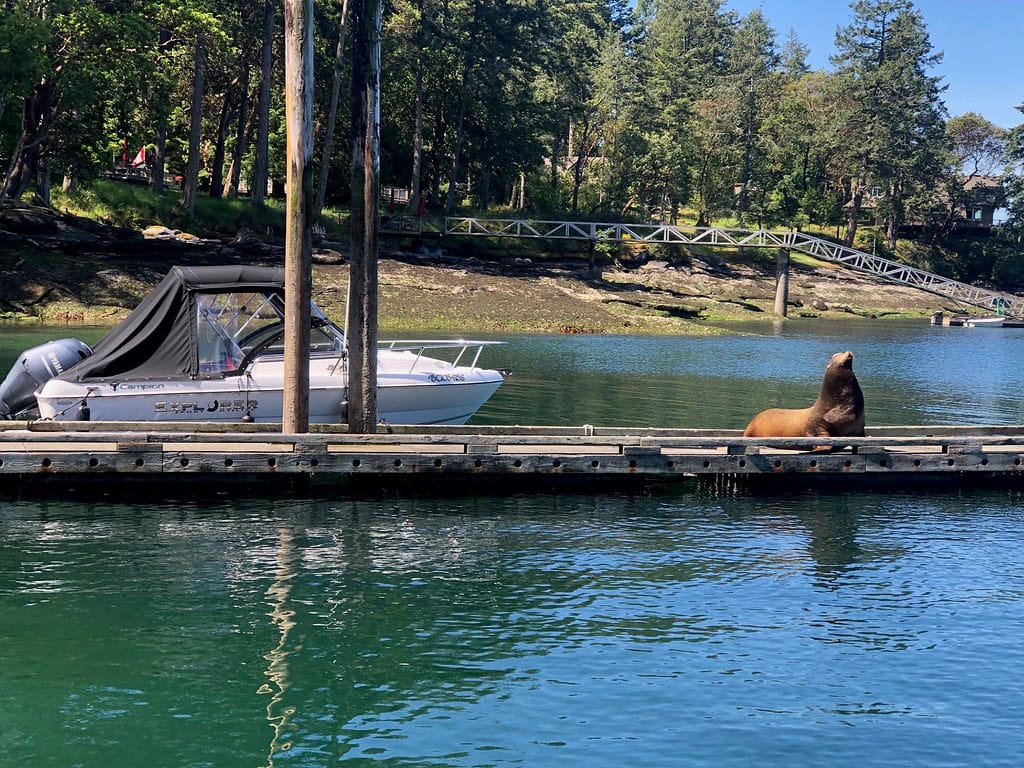Dock Inventory News:
As some of our members may have noticed, staff from the BC government and shishalh Nation began conducting their inventory of existing docks and boathouses throughout the Swiya in late September.
The Dock Management Project website was updated to include some brief information about this process, which you can read here.
The purpose of this inventory process is to document existing structures (description, photographic evidence, location and present condition) for the purpose of granting tenure or transitioning from your existing tenure, through self-registration to a 20-year renewable authorization (grandfathering). Per the website:
The inventory will involve:
- Photography used to develop a current (or confirm) inventory of existing private moorage structures
- An assessment to inform a condition-rating. This will be used to support work planning for transition to 20 year long-term authorizations
The WPC requested and was granted representation (board members and volunteers) on some of the boat trips. We asked to be a part of this process so we could obtain insight into how this work is being done and what criteria are being considered. We can report, that based on the boat trips we have been on, the evaluations are being conducted in a professional and unbiased manner. We thank our volunteers for enduring the poor weather and rough seas at times.
This inventory has also been conducted on Sakinaw and Ruby lakes to confirm a baseline of existing docks and boathouses. However, lake registration remains on hold pending lake environmental review and specific lake plans. The lake owner's organization, sLSA, will have input in this process.
The list of the information being recorded on these boat trips by the BC government and shishalh Nation has been published by the government and is available here (PDF):
The condition assessment assesses the current state of docks and boathouses and their usage. The following questions outline the data that is collected for the inventory for the condition assessment:
1. Is a boathouse present? Yes or no
2. Is boathouse being used for boat storage purposes? Yes or no
3. Is boathouse being used for additional non-boat storage purposes? Yes or no
4. Are there additional structures on Crown land within the foreshore?* Yes or no
5. Is there unencapsulated Styrofoam that is spalling? Yes or no
6. If unencapsulated Styrofoam, is it significantly deteriorated? Yes or no
7. Does the dock have light-penetrating decking? Yes or no
8. Does the dock have creosote pilings? Yes or no
9. Are there any safety hazards of concern? Yes or no
10. Is the dock floating properly? Yes or no
11. How is the dock’s overall condition?**
- Great/Good – well kept, no work needed for maintenance;
- Okay/Needs work eventually – some work will be needed for maintenance over the next decade;
- Derelict/Needs work now – needs work immediately to bring into a safe, clean and sanitary condition as current state is unsafe and derelict
*Question 4: This assessment allows staff to ensure that through the planning for long-term authorizations that appropriate authorizations are considered during the transition. As structures other than private moorage may require different forms of authorization under the Land Act, this question allows staff to plan and efficiently review files.
**Question 11: This assessment scores the overall state of a dock to determine if it requires remediation in the next two years. Docks that are deemed “Derelict” include docks that have immediate concerns of severely deteriorating structural integrity and floatation. Some examples include docks that are sinking, have broken or rotting deck boards and/or have significant chunks of Styrofoam missing from their floatation. Docks and/or boathouses deemed in “Derelict” condition will receive a notice with next steps required to bring their dock into a safer condition to be eligible for authorization under the Land Act. This includes a two-year period for a remediation plan to bring the dock into a safer and less hazardous condition.
As the inventorying process is currently taking place at end-of-season, the WPC is encouraging those with seasonal docks, piers, gangways, ramps or floats to ensure that the seasonal nature of your moorage is noted in your self-assessment form submission. If you have already made your submission or you'd like to add photos to your registration for reference, please email them to AuthorizingAgency.SurreyLandManage@gov.bc.ca. This step, while optional, ensures that your existing moorage structures are accurately documented.
We have had some great questions from our members which we have sent to the government for clarification. We will communicate their responses as soon as we have more information. Here are some questions we have already received answers to:
Answered Questions:
- What is the deadline for completing the self-registration form?
Self-registration allows the province and shishalh to efficiently transition existing docks to 20-year renewable long term authorizations. While there is no deadline to complete the self-registration form, early self-registration ensures you are prioritized in the transition process. - When does the 10-year term for removing of unexposed Styrofoam and retrofitting transparent decking or an alternative solution commence?
The clock for the 10-year removal of unexposed Styrofoam and dealing with transparent decking or an alternative solution started the day self-registration system went live, September 18, 2024. - Why are some people not receiving submission confirmation emails and what should be done to remedy this?
Please remember to “email yourself a copy” of the Self-Registration form once complete. The form does not auto-email. If you need the email link to your self-registration form sent to you as you have already completed your registration, please email ssDMP@gov.bc.ca.
Pending Questions:
- What are the expected response times for those who have requested assistance when submitting their dock and boathouse self-registration form?
The WPC and our volunteers have been out on the water again as the inventorying process continues. We will continue to keep you updated as this work progresses.
Our Next Steps:
The WPC is continuing to focus our efforts on a range of projects relevant to our members. One area we're actively exploring is the commissioning of independent, peer-reviewed research into light-penetrative decking alternatives. With marine docks in the Swiya expected to conform to light-penetrative requirements within the next 10 years, further exploration of available options is prudent.
This research would need to be grounded in modern, unbiased science and specifically tailored to the unique geographic characteristics of our region, rather than relying on findings from other areas. Advancing this project will require a comprehensive, long-term study, gathering extensive data to ensure thoroughness and accuracy.
We welcome thoughtful dialogue with those interested in contributing their expertise or learning more about the project.
Obtaining additional funding will be essential to the success of this initiative and will ensure the research is comprehensive, thorough, and conducted to the highest standards.
WPC Photo Contest:
Thank you to those who opted to participate in the WPC’s Celebrate Life on Your Dock Photo Contest! There were many great entries and it was hard to choose just three winners. We have reviewed all submissions and have selected the following:



